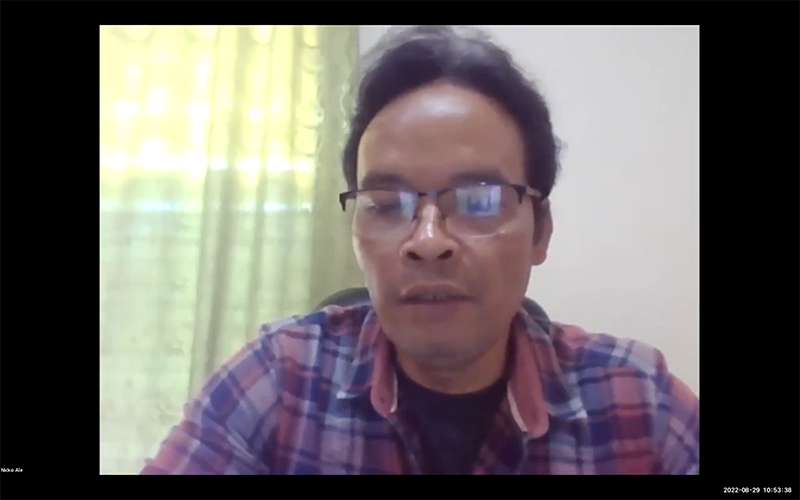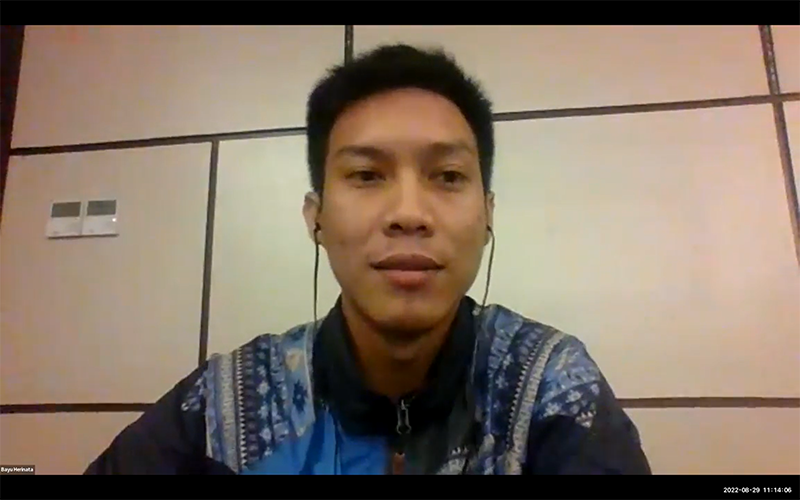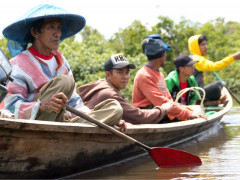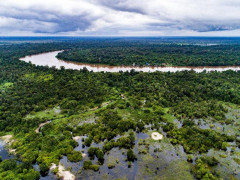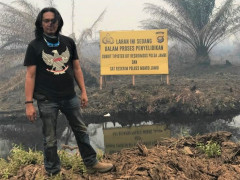Looking at Peatlands through a Different Lens
By Nadine Zamira
The Forest and Land Fire is Real, the Law Enforcement is Not
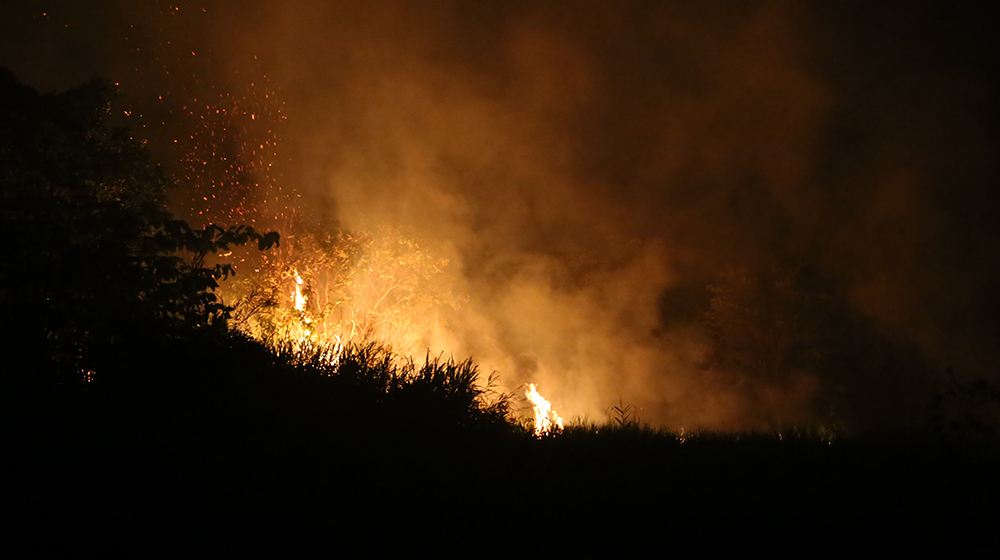
The threat of forest and land fires in 2022 was predicted to be higher than in 2021. Meteorological, Climatological, and Geophysical Agency (BMKG) explained the reason was because the dry season was drier in most parts of Indonesia. Although there is no phenomenon of warming sea surface temperature (El Niño) in 2022, preparation and vigilance for the dry season must be increased. On peatland, moreover, the occurrence of fire will be arduous to extinguish.
Responding to all the existing forest and land fire potentials, Pantau Gambut published a study on the vulnerability of forest and land fires in four provinces (Jambi, Riau, West Kalimantan and Central Kalimantan) through an online Media Briefing. The event was opened by the National Coordinator of Pantau Gambut − Iola Abas. Iola said that Pantau Gambut's background in carrying out the forest and land fire vulnerability study was to remind that law enforcement against corporate actors who burn and destroy peatlands must be seriously enforced to prevent the repeated forest and land fires in vulnerable areas.
Apart from the satellite imagery analysis of the forest and land fires vulnerable areas that was presented by Diani Nafitri as the representative of Pantau Gambut, four organizations from the Pantau Gambut network (Simpul Jaringan) were also invited to conduct investigations related to forest and land fires in their respective areas, they are: 1) Kaliptra Andalas represented by Teuku Ibrahim; 2) Perkumpulan Hijau Jambi represented by Angga Septia; 3) WALHI Kalimantan Barat represented by Nicodemus Ale; and 4) WALHI Kalimantan Tengah with Bayu Herinata as its representative. There are several important points from each speaker:
Diani Nafitri, GIS Analyst for Pantau Gambut said: “The portion of 64% is the total area of peatland that has burned outside the concession area, which is spread over most of the eight provinces that have peat. However, for several provinces, such as Jambi, Riau, and Central Kalimantan, most of peat fires occurred within concession areas. Concession areas must still be a monitoring priority. In particular, the field monitoring results show that the utilization of protected peat for extractive industrial areas and burnt areas that have not been restored are instead replanted with oil palm and acacia species. In the buffer area (one km radius area) where forest and land fire has been detected, the results of verification through satellite imagery show that the appearance of burnt land in the one km radius has changed to form a structured and neat pattern of plantation areas. This change in pattern indicates that there are activities that are deliberately carried out to expand the plantation area.”
Tengku Ibrahim, the Acting Director of Kaliptra Andalas said: "Village regulations (Peraturan Desa/Perdes) are important to implement at the village level, because it is not only companies that must be made aware of forest and land fires, but also the local community not to burn land. Tree Cover Lost (TCL) must also receive priority handling because most of the fire sources originate from the TCL area.”
Angga Septia, Deputy Director of Perkumpulan Hijau Jambi said: "The manifestation of the government's lack of seriousness in dealing with forest and land fires can be seen from only anticipating it without any mitigation process so that the forest and land fires continue to recur. The handling of forest and land fire also seems slow due to the shifting of authority to resolve the problems."
Nicodemus Ale, Executive Director of WALHI Kalimantan Barat said: “Concession holders have never reported to the relevant agencies in carrying out recovery/restoration activities due to weak oversight from the relevant government agencies. In fact, from 2015 to 2018, not a single fire occurred in concession areas covered by law. For law enforcement of forest and land fire in the concession area in West Kalimantan, it falls short of expectations. However, when it is the farmers [who are suspected of burning], they are promptly legally processed".
Bayu Herinata, Executive Director of WALHI Kalimantan Tengah said: “Forest and land fire arises from inappropriate land use and does not consider environmental aspects. Thus, many activities that contribute to environmental degradation are carried out, such as the construction of canals. Law enforcement must be able to target larger entities and not only smaller groups of people.”
See the study "Alert of Forest and Land Fire Vulnerability in 2022" at the following link.



